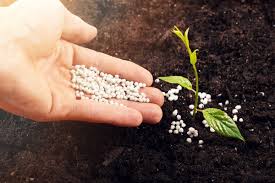Indoor plants have become a popular addition to homes, offering not only aesthetic appeal but also numerous benefits such as improved air quality and enhanced well-being. For beginners, taking care of indoor plants can seem overwhelming, but with the right practices and knowledge, you can ensure your plants thrive. This comprehensive guide outlines the best indoor plant care practices for beginners in 2024, complete with tips and tricks to keep your greenery lush and vibrant.
1. Choosing the Right Indoor Plants

Selecting the right plants is crucial for successful indoor gardening. As a beginner, opt for low-maintenance plants that are forgiving and adaptable.
Low-Maintenance Plants
- Snake Plant (Sansevieria): Known for its hardy nature and tolerance to low light, the Snake Plant is perfect for beginners.
- Pothos (Epipremnum aureum): This trailing plant is easy to care for and thrives in a variety of lighting conditions.
- ZZ Plant (Zamioculcas zamiifolia): ZZ Plants are virtually indestructible, handling low light and infrequent watering with ease.
2. Understanding Light Requirements
Light is a fundamental factor in plant health. Different plants have varying light needs, so understanding these requirements is essential.
Types of Light
- Bright, Indirect Light: Most indoor plants prefer bright, indirect light. Place them near windows with filtered sunlight or use sheer curtains.
- Low Light: Plants like the Snake Plant and ZZ Plant can thrive in low light conditions, making them suitable for rooms with minimal natural light.
- Artificial Light: If natural light is insufficient, consider using LED grow lights to supplement your plants’ needs.
3. Watering Essentials
Proper watering is one of the most critical aspects of indoor plant care. Overwatering or underwatering can lead to plant stress or disease.
Watering Tips
- Check Soil Moisture: Before watering, check if the soil is dry. Insert your finger into the soil about an inch deep; if it feels dry, it’s time to water.
- Water Thoroughly: When watering, ensure that water reaches the root zone. Allow excess water to drain out of the bottom of the pot to prevent root rot.
- Use Room-Temperature Water: Avoid using cold tap water, as it can shock the plant. Room-temperature water is gentler on the roots.
4. Maintaining Proper Humidity
Indoor plants often require higher humidity levels than what is typical in most homes.
Increasing Humidity
- Humidity Trays: Place a shallow tray filled with water and pebbles under your plants to increase local humidity.
- Room Humidifiers: Using a humidifier can help maintain adequate humidity levels, especially in dry indoor environments.
- Group Plants Together: Placing plants close together can create a microenvironment with higher humidity.
5. Choosing the Right Soil and Fertilizer

The right soil and fertilizer can make a significant difference in plant health.
Soil Types
- Potting Mix: Use a high-quality potting mix that provides good drainage and aeration. Avoid garden soil, which can be too heavy and lead to poor drainage.
- Specialty Mixes: For specific plants, such as succulents or orchids, use specialized soil mixes that cater to their unique needs.
Fertilizing Tips
- Balanced Fertilizers: Use a balanced fertilizer (e.g., 10-10-10) for general plant health.
- Application Frequency: Fertilize during the growing season (spring and summer) and reduce or stop during the dormant period (fall and winter).
6. Repotting and Pot Selection
Repotting is essential for maintaining plant health and encouraging growth.
When to Repot
- Signs of Overgrowth: Repot plants when they outgrow their container, show signs of root crowding, or when the soil becomes compacted.
- Best Time to Repot: Spring is an ideal time for repotting, as it aligns with the plant’s active growing season.
Pot Selection
- Pot Size: Choose a pot that is 1-2 inches larger in diameter than the current pot to provide room for growth.
- Drainage: Ensure the pot has drainage holes to prevent waterlogging and root rot.
7. Pruning and Maintenance
Regular pruning helps keep your plants healthy and aesthetically pleasing.
Pruning Techniques
- Remove Dead or Yellow Leaves: Trim off dead or yellowing leaves to encourage new growth and prevent disease.
- Shape and Size Control: Prune plants to maintain their shape and size, promoting a fuller appearance.
Leaf Care
- Dusting Leaves: Wipe leaves with a damp cloth to remove dust and improve light absorption.
8. Pest Control and Disease Prevention
Indoor plants can be susceptible to pests and diseases, but early intervention can keep issues under control.
Common Pests
- Aphids and Mealybugs: Treat with insecticidal soap or neem oil.
- Spider Mites: Increase humidity and use miticides to manage spider mites.
Disease Prevention
- Good Air Circulation: Ensure adequate airflow around your plants to reduce the risk of fungal infections.
- Avoid Overwatering: Overwatering can lead to root rot and fungal diseases. Ensure proper drainage and avoid waterlogged soil.
9. Seasonal Care Adjustments
Adjusting your plant care routine according to the seasons can help your plants thrive throughout the year.
Winter Care
- Reduce Watering: Most plants need less water during winter. Allow the soil to dry out more between waterings.
- Increase Light Exposure: With shorter days and less natural light, consider moving plants to brighter spots or using grow lights.
Summer Care
- Monitor Watering: Increased temperatures may require more frequent watering. Check soil moisture regularly.
- Watch for Pests: Warm weather can lead to higher pest activity. Keep an eye out for infestations.
10. Creating a Plant-Friendly Environment

Designing a supportive environment can enhance the overall health and growth of your indoor plants.
Plant Placement
- Optimal Locations: Place plants according to their light and humidity needs. Avoid drafts and direct air from heaters or air conditioners.
- Decorative Elements: Use plant stands, shelves, or hangers to showcase your plants and create an attractive display.
Plant Accessories
- Watering Tools: Invest in quality watering cans and tools to make plant care easier and more efficient.
- Plant Labels: Use labels to keep track of plant names, care requirements, and fertilization schedules.
Conclusion
Indoor plant care can be a rewarding and enjoyable experience when approached with the right knowledge and practices. By following these best practices for beginners, you can ensure that your houseplants remain healthy, vibrant, and a beautiful addition to your home. Remember, every plant is unique, so take the time to understand the specific needs of your indoor greenery and adjust your care routine accordingly



